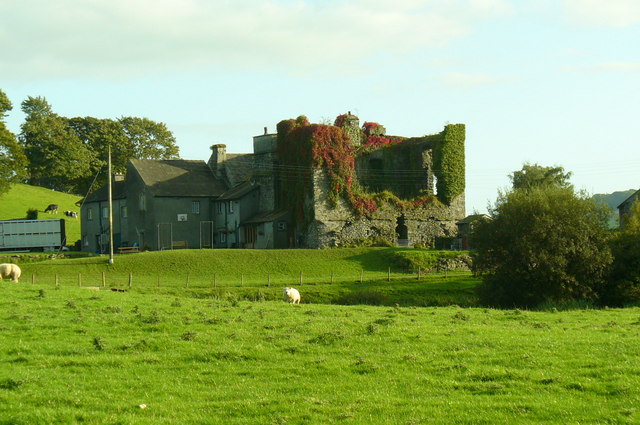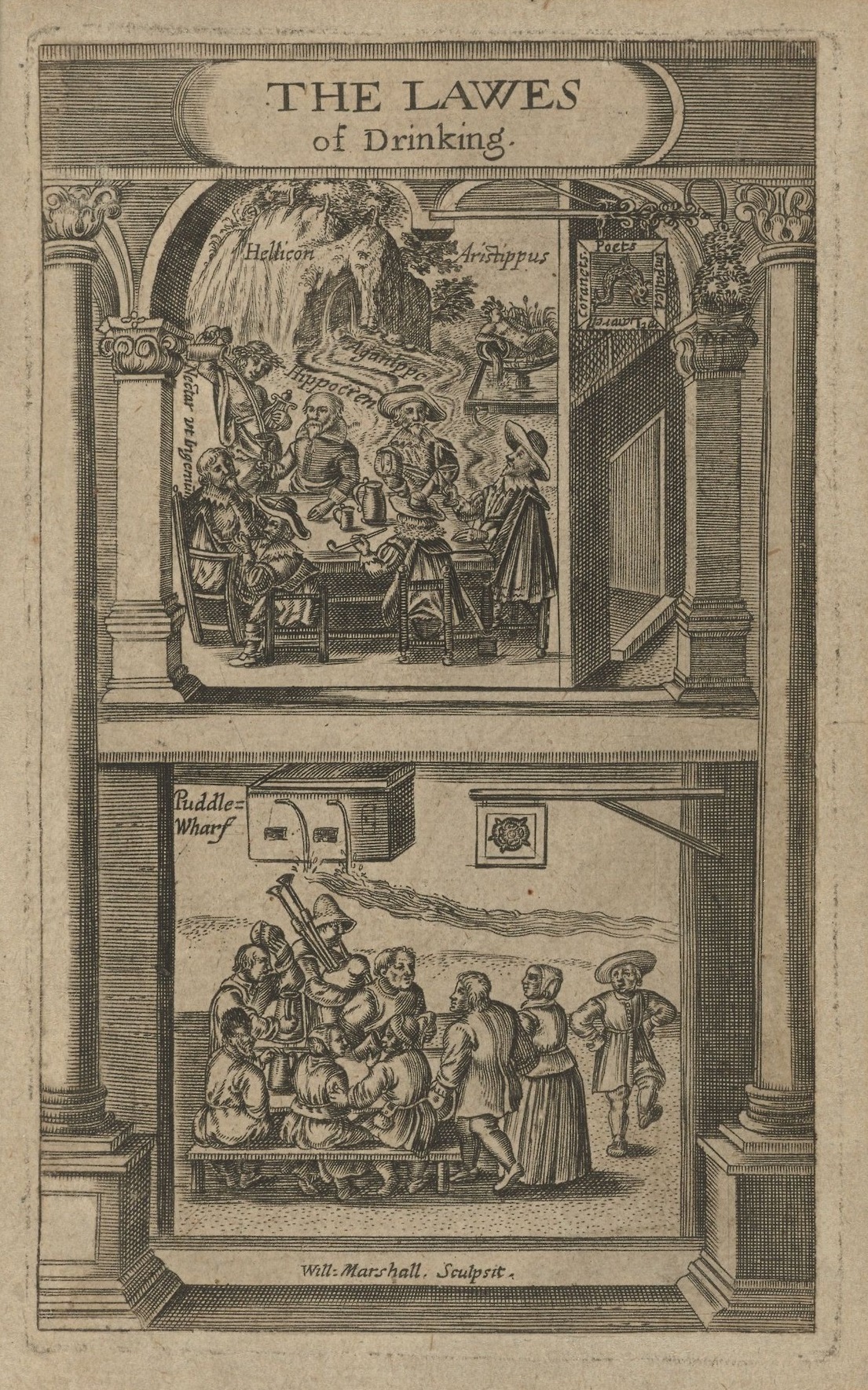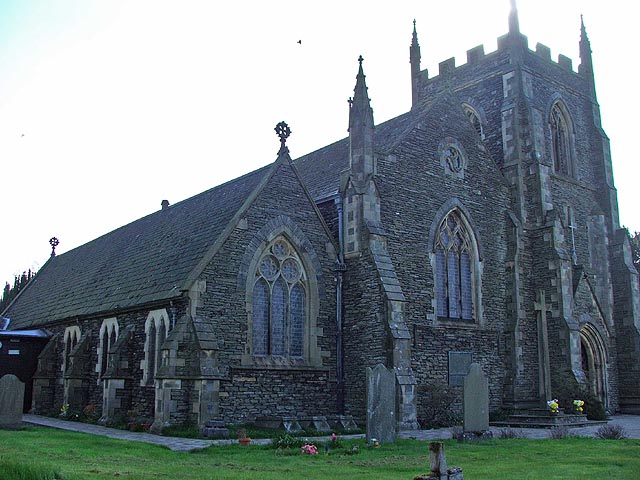|
Burneside Hall
Burneside Hall is a converted medieval pele tower in Burneside, Cumbria, England. History Documentary records for Burneside Hall extend to 1290, when a property was owned on the site by Gilbert Burneshead, the Under-Sheriff of Westmorland. Richard Bellingham, a member of an influential Northumberland family, married Burneshead's daughter, acquiring the site. Burneside Hall in its current form was originally built in the second half of the 14th century by the Bellingham family. The medieval heart of Burneside Hall was a pair of pele towers, linked by a large, open hall. Only one of these towers still remains, three storeys tall but badly ruined, measuring 20 feet by 35 feet (6 metres by 11 metres). This tower was originally the buttery and pantry, forming the service end of the castle. A two-storey gatehouse at the front of the property was built in the late-16th or 17th century, with a relatively substantial barmkin wall, 6 feet (2 metres) thick in places, erected around it. ... [...More Info...] [...Related Items...] OR: [Wikipedia] [Google] [Baidu] |
Grade II* Listed Buildings In South Lakeland
There are over 20,000 Grade II* listed buildings in England. This page is a list of these buildings in the district of South Lakeland in Cumbria Cumbria ( ) is a ceremonial and non-metropolitan county in North West England, bordering Scotland. The county and Cumbria County Council, its local government, came into existence in 1974 after the passage of the Local Government Act 1972. Cumb .... South Lakeland Notes External links {{DEFAULTSORT:South Lakeland Lists of listed buildings in Cumbria Lists of Grade II* listed buildings in Cumbria ... [...More Info...] [...Related Items...] OR: [Wikipedia] [Google] [Baidu] |
Cumbria
Cumbria ( ) is a ceremonial and non-metropolitan county in North West England, bordering Scotland. The county and Cumbria County Council, its local government, came into existence in 1974 after the passage of the Local Government Act 1972. Cumbria's county town is Carlisle, in the north of the county. Other major settlements include Barrow-in-Furness, Kendal, Whitehaven and Workington. The administrative county of Cumbria consists of six districts ( Allerdale, Barrow-in-Furness, Carlisle, Copeland, Eden and South Lakeland) and, in 2019, had a population of 500,012. Cumbria is one of the most sparsely populated counties in England, with 73.4 people per km2 (190/sq mi). On 1 April 2023, the administrative county of Cumbria will be abolished and replaced with two new unitary authorities: Westmorland and Furness (Barrow-in-Furness, Eden, South Lakeland) and Cumberland ( Allerdale, Carlisle, Copeland). Cumbria is the third largest ceremonial county in England by area. It i ... [...More Info...] [...Related Items...] OR: [Wikipedia] [Google] [Baidu] |
Scheduled Monument
In the United Kingdom, a scheduled monument is a nationally important archaeological site or historic building, given protection against unauthorised change. The various pieces of legislation that legally protect heritage assets from damage and destruction are grouped under the term "designation." The protection provided to scheduled monuments is given under the Ancient Monuments and Archaeological Areas Act 1979, which is a different law from that used for listed buildings (which fall within the town and country planning system). A heritage asset is a part of the historic environment that is valued because of its historic, archaeological, architectural or artistic interest. Only some of these are judged to be important enough to have extra legal protection through designation. There are about 20,000 scheduled monuments in England representing about 37,000 heritage assets. Of the tens of thousands of scheduled monuments in the UK, most are inconspicuous archaeological sites, but ... [...More Info...] [...Related Items...] OR: [Wikipedia] [Google] [Baidu] |
Grade II* Listed Buildings In Cumbria
The county of Cumbria is divided into six districts. The districts of Cumbria are Borough of Barrow-in-Furness, District of South Lakeland, Borough of Copeland, Borough of Allerdale, District of Eden, City of Carlisle. As there are 460 Grade II* listed buildings in the county they have been split into separate lists for each district. * Grade II* listed buildings in Allerdale * Grade II* listed buildings in Barrow-in-Furness (borough) * Grade II* listed buildings in the City of Carlisle * Grade II* listed buildings in Copeland * Grade II* listed buildings in Eden * Grade II* listed buildings in South Lakeland See also * Grade I listed buildings in Cumbria There are over 9000 Grade I listed buildings in England. This page is a list of these buildings in the county of Cumbria, sub-divided by district. Allerdale Barrow-in-Furness Carlisle ... * :Grade II* listed buildings in Cumbria References [...More Info...] [...Related Items...] OR: [Wikipedia] [Google] [Baidu] |
Westmorland
Westmorland (, formerly also spelt ''Westmoreland'';R. Wilkinson The British Isles, Sheet The British IslesVision of Britain/ref> is a historic county in North West England spanning the southern Lake District and the northern Dales. It had an administrative function from the 12th century until 1974. Between 1974 and 2023 Westmorland lay within the administrative county of Cumbria. In April 2023, Cumbria County Council will be abolished and replaced with two unitary authorities, one of which, Westmorland and Furness, will cover all of Westmorland (as well as other areas), thereby restoring the Westmorland name to a top-tier administrative entity. The people of Westmorland are known as Westmerians. Early history Background At the beginning of the 10th century a large part of modern day Cumbria was part of the Kingdom of Strathclyde, and was known as '' "Scottish Cumberland" ''. The Rere Cross was ordered by Edmund I (r.939-946) to serve as a boundary marker between England an ... [...More Info...] [...Related Items...] OR: [Wikipedia] [Google] [Baidu] |
The Border Regiment
The Border Regiment was a line infantry regiment of the British Army, which was formed in 1881 under the Childers Reforms by the amalgamation of the 34th (Cumberland) Regiment of Foot and the 55th (Westmorland) Regiment of Foot. After service in the Second Boer War, followed by both World War I and World War II, the regiment was amalgamated with the King's Own Royal Regiment (Lancaster) into the King's Own Royal Border Regiment in 1959, which was later merged with the King's Regiment (Liverpool and Manchester) and the Queen's Lancashire Regiment to form the present Duke of Lancaster's Regiment (King's, Lancashire and Border), which continues the lineage of the Border Regiment. History 1881–1914 The regiment was formed on 1 July 1881 as part of the Childers Reforms by the amalgamation of the 34th (Cumberland) Regiment of Foot and the 55th (Westmorland) Regiment of Foot. Under the reforms, each line infantry regiment was to have a defined regimental district, with two regul ... [...More Info...] [...Related Items...] OR: [Wikipedia] [Google] [Baidu] |
List Of Castles In England
This list of castles in England is not a list of every building and site that has "castle" as part of its name, nor does it list only buildings that conform to a strict definition of a castle as a medieval fortified residence. It is not a list of every castle ever built in England, many of which have vanished without trace, but is primarily a list of buildings and remains that have survived. In almost every case the buildings that survive are either ruined, or have been altered over the centuries. For several reasons, whether a given site is that of a medieval castle has not been taken to be a sufficient criterion for determining whether or not that site should be included in the list. Castles that have vanished or whose remains are barely visible are not listed, except for some important or well-known buildings and sites. Fortifications from before the medieval period are not listed, nor are architectural follies. In other respects it is difficult to identify clear and cons ... [...More Info...] [...Related Items...] OR: [Wikipedia] [Google] [Baidu] |
Castles In Great Britain And Ireland
Castles have played an important military, economic and social role in Great Britain and Ireland since their introduction following the Norman invasion of England in 1066. Although a small number of castles had been built in England in the 1050s, the Normans began to build motte and bailey and ringwork castles in large numbers to control their newly occupied territories in England and the Welsh Marches. During the 12th century the Normans began to build more castles in stone – with characteristic square keep – that played both military and political roles. Royal castles were used to control key towns and the economically important forests, while baronial castles were used by the Norman lords to control their widespread estates. David I invited Anglo-Norman lords into Scotland in the early 12th century to help him colonise and control areas of his kingdom such as Galloway; the new lords brought castle technologies with them and wooden castles began to be established over ... [...More Info...] [...Related Items...] OR: [Wikipedia] [Google] [Baidu] |
Listed Buildings In Strickland Roger
Strickland Roger is a civil parish in the South Lakeland District of Cumbria Cumbria ( ) is a ceremonial and non-metropolitan county in North West England, bordering Scotland. The county and Cumbria County Council, its local government, came into existence in 1974 after the passage of the Local Government Act 1972. Cumb ..., England. It contains nine listed buildings that are recorded in the National Heritage List for England. Of these, one is listed at Grade II*, the middle of the three grades, and the others are at Grade II, the lowest grade. The parish is almost completely rural, and the listed buildings consist of houses, a gatehouse, farmhouses and farm buildings, a bridge, and a cottage associated with a mill. __NOTOC__ Key Buildings References Citations Sources * * * * * * * * * * * * {{DEFAULTSORT:Strickland Roger Lists of listed buildings in Cumbria ... [...More Info...] [...Related Items...] OR: [Wikipedia] [Google] [Baidu] |
English Heritage
English Heritage (officially the English Heritage Trust) is a charity that manages over 400 historic monuments, buildings and places. These include prehistoric sites, medieval castles, Roman forts and country houses. The charity states that it uses these properties to "bring the story of England to life for over 10 million people each year". Within its portfolio are Stonehenge, Dover Castle, Tintagel Castle and the best preserved parts of Hadrian's Wall. English Heritage also manages the London Blue Plaque scheme, which links influential historical figures to particular buildings. When originally formed in 1983, English Heritage was the operating name of an executive non-departmental public body of the British Government, officially titled the Historic Buildings and Monuments Commission for England, that ran the national system of heritage protection and managed a range of historic properties. It was created to combine the roles of existing bodies that had emerged from a long ... [...More Info...] [...Related Items...] OR: [Wikipedia] [Google] [Baidu] |
Richard Brathwaite
Richard Brathwait or Brathwaite (1588 – 4 May 1673) was an English poet. Life Brathwait was born at Burnishead, near Kendal. He entered Oriel College, Oxford in 1604, and remained there for some years, pursuing the study of poetry and Roman history. He moved to Cambridge to study law at the University of Cambridge, university and afterwards to London to the Inns of Court. His father, Thomas, died in 1610, and Brathwait went down to live on the estate he inherited. He was married at Hurworth-on-Tees, Hurworth in County Durham, 4 May 1617, to Frances, daughter of James Lawson, of Neasham Priory, Nesham Abbey. In 1633 his wife died, and in 1639 he married again. His only son by this second marriage, Sir Strafford Brathwait, was killed at sea. Brathwait is believed to have served with the Cavalier, Royalist army in the English Civil War, Civil War. He was the author of many works of very unequal merit, of which the best known is ''Drunken Barnaby's Four Journeys'', which record ... [...More Info...] [...Related Items...] OR: [Wikipedia] [Google] [Baidu] |
Burneside Hall - Geograph
Burneside () is a small village in South Lakeland in Cumbria, England. It is located to the north of Kendal and to the south east of Staveley, on the River Kent, just upstream from the confluence of the River Sprint. It has about 3,000 inhabitants. By the time of the 2011 Census Burneside had been transformed into an electoral ward only. The population of this ward was 1,888. The majority of the population are now recorded as living in Strickland Ketel parish. Burneside railway station is situated on the Windermere Branch Line, with services to Windermere to the north west, Oxenholme on the West Coast Main Line, and Lancaster to the south. Burneside is around from the M6 motorway. Politics In 1974, under the Local Government Act 1972, Burneside became a part of the South Lakeland district whose administrative centre is Kendal. Burneside is part of Westmorland and Lonsdale constituency for which Tim Farron is the current member of parliament, representing the Liberal Dem ... [...More Info...] [...Related Items...] OR: [Wikipedia] [Google] [Baidu] |






.jpg)

